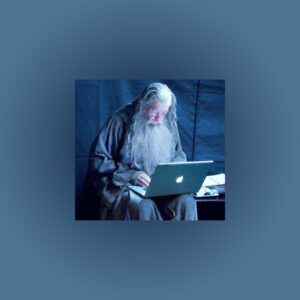 An exchange with a LowEndTalk forum member reminded me of “Portrait of J. Random Hacker”.
An exchange with a LowEndTalk forum member reminded me of “Portrait of J. Random Hacker”.
It was published as an appendix to the Jargon File. The fact that something is called “the ____ File” should clue you in to its antiquity. The Jargon File dates from a time when text files were passed around on the Internet (or earlier, via tape). Appendix B, “Portrait of J. Random Hacker” was added in 1991.
So here, of course, “hacker” here does not mean “computer intruder” but rather in the traditional sense of “a hacker is a person skilled in information technology who uses their technical knowledge to achieve a goal or overcome an obstacle, within a computerized system by non-standard means” to quote Wikipedia.
The Portrait is a description of the habits, beliefs, general appearance, and characteristics of the typical hacker. It reflects 70s-80s IT, when U.S. IT was largely consisted of bearded college graduates who all looked like Dennis Ritchie. This is a slight exaggeration – for every Birk-bearing bearded Berkeleyite there were there or more buzz cut ex-military or corporate drones in suits. However, the “Portrait” is not referring to everyone in IT, but it’s implied that it is describing the top tier of coders and wizards. In the universe of the Portrait, people like Richard Stallman, Bill Joy, Brian Kernighan, and Marshall McKusick are the hacker types referred to.
Fast forward a generation and a half later, and IT is radically different. For one thing, it’s orders of magnitude bigger. In the 70s if you wanted to use a computer you needed an association with a large organization that owned on. With the advent of the personal computer in the 80s, IT began to explode. By the late 90s, there were at least 100x people involved in IT compared to the 1970s.
This expansion also tremendously broadened the diversity in IT. You still encounter the bearded hippie in mountain boots but in 2023, they are no longer the majority. Indeed, it’s astonishing to remember that they once were. Today you’ve got a galaxy of cultures, genders, ethnicities, locations, you name it.
Still, the “hacker ethos” is very much alive. Although the physical descriptions and cultural references are out of date, many of the “here is how hackers think” have been norms in IT. See if these sound familiar. (I’ve linked sub-sections of the document. The top level is here.)
Reading: “Omnivorous, but usually includes lots of science and science fiction. The typical hacker household might subscribe to Analog, Scientific American, Whole-Earth Review, and Smithsonian (most hackers ignore Wired and other self-consciously ‘cyberpunk’ magazines, considering them wannabee fodder). Hackers often have a reading range that astonishes liberal arts people but tend not to talk about it as much. Many hackers spend as much of their spare time reading as the average American burns up watching TV, and often keep shelves and shelves of well-thumbed books in their homes.”
Three decades later, there’s also a vast array of video platforms that the DVD-bound low-bandwidth world of the 1980s could not have imagined, and of course “shelves and shelves” is now gigs and gigs on tablets, but regardless, the best hackers I’ve known have been insatiable consumers of information.
Gender and Ethnicity: “Hackerdom is still predominantly male. However, the percentage of women is clearly higher than the low-single-digit range typical for technical professions, and female hackers are generally respected and dealt with as equals….Racial and ethnic prejudice is notably uncommon and tends to be met with freezing contempt. When asked, hackers often ascribe their culture’s gender- and color-blindness to a positive effect of text-only network channels, and this is doubtless a powerful influence. Also, the ties many hackers have to AI research and SF literature may have helped them to develop an idea of personhood that is inclusive rather than exclusive — after all, if one’s imagination readily grants full human rights to future AI programs, robots, dolphins, and extraterrestrial aliens, mere color and gender can’t seem very important any more.”
I’ve often said that of all the industries/professions in which I’ve worked, IT is the most tolerant. “Freezing contempt” is right.
Sexual Habits: “Hackerdom easily tolerates a much wider range of sexual and lifestyle variation than the mainstream culture. It includes a relatively large gay and bisexual contingent. Hackers are somewhat more likely to live in polygynous or polyandrous relationships, practice open marriage, or live in communes or group houses. In this, as in general appearance, hackerdom semi-consciously maintains ‘counterculture’ values.”
I doubt there is a lot of communal or group housing living in 2023 – for one thing, IT salaries have risen to the point where engineers can afford homes. Certainly there are people who pair up with roommates but the idea that hackers are living in broad communities of sexual abandon is absurd. However, the point on toleration is spot on. Indeed, it is tempting to speculate that the field attracts counter-culture types specifically because of its tolerance.
What do you think? Has IT taken the hacker ethos and made it universal in the industry or do you disagree? Let us know in the comments below!

























Leave a Reply